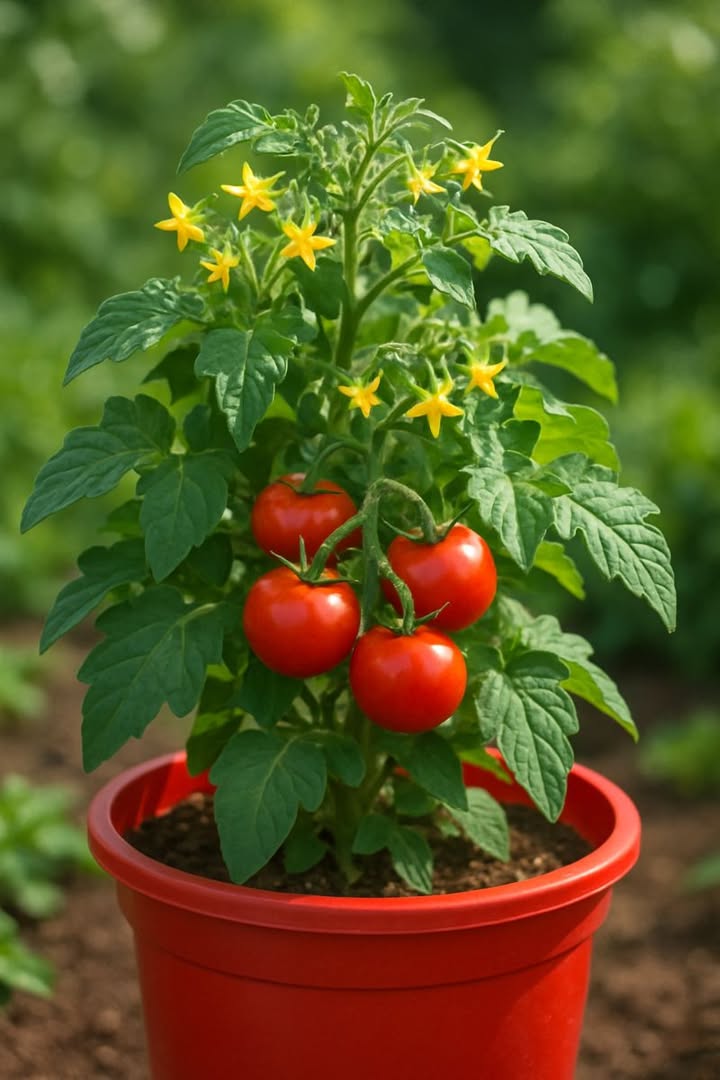Continued on next page…
If you prefer indeterminate varieties, which continue to grow and produce fruit throughout the season, choose compact types like ‘Sweet Million’ or ‘Sungold’. These can be trained to grow vertically with proper support.
3. Use High-Quality Potting Mix
A high-quality potting mix is essential for container-grown tomatoes. Unlike garden soil, potting mix is designed to be lightweight and well-draining, which prevents root rot and other moisture-related issues. Look for a mix that contains ingredients like peat moss, perlite, and vermiculite, which help retain moisture while providing good aeration.
Consider adding a slow-release fertilizer to the potting mix before planting to ensure your tomatoes have a steady supply of nutrients throughout the growing season.
4. Ensure Proper Drainage
Proper drainage is critical to prevent waterlogged soil, which can lead to root rot and other diseases. Make sure your container has several drainage holes at the bottom. If your container doesn’t have holes, you can drill them yourself.
To further improve drainage, consider placing a layer of gravel or broken pottery at the bottom of the container before adding the potting mix. This helps excess water escape more easily and keeps the roots healthy.
5. Position for Optimal Sunlight
Tomatoes require full sun to thrive, which means they need at least 6 to 8 hours of direct sunlight each day. Position your containers in a location that receives ample sunlight, such as a south-facing balcony or patio.
If you live in a particularly hot climate, consider providing some afternoon shade to prevent the plants from overheating. You can use shade cloth or move the containers to a slightly shaded area during the hottest part of the day.
6. Water Consistently and Correctly
Consistent watering is key to healthy tomato plants. Containers dry out more quickly than garden beds, so you may need to water daily, especially during hot weather. Water deeply until it runs out of the drainage holes to ensure the entire root system is hydrated.
Avoid overhead watering, which can promote fungal diseases. Instead, water at the base of the plant or use a drip irrigation system to deliver moisture directly to the roots.
ADVERTISEMENT

